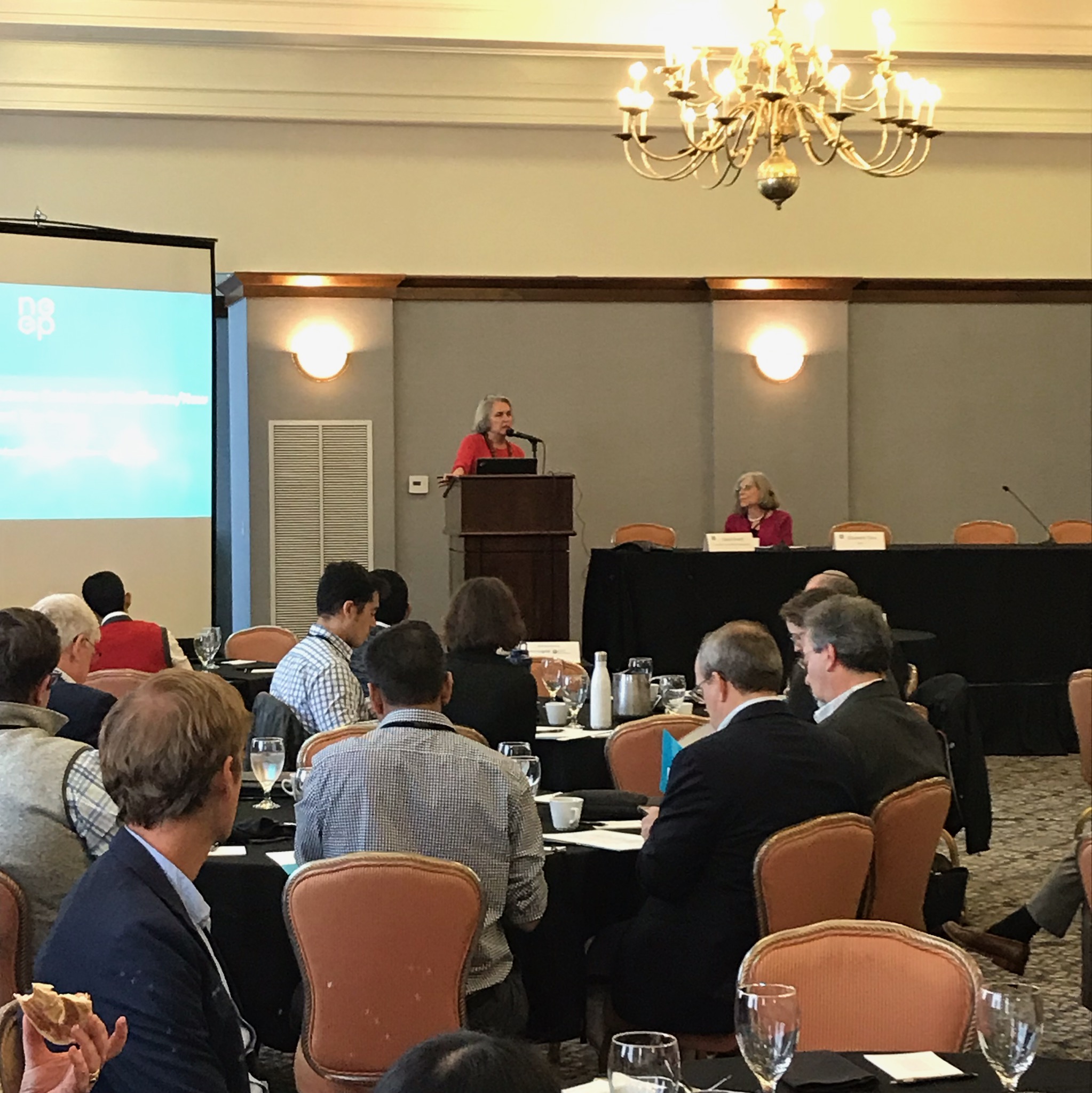
By Alook Mozinder… | Mon, June 10, 19
It was a bright sunny day in Providence, Rhode Island and a cool breeze was blowing through the large sliding glass doors as people from various government departments, utilities, energy service companies, consulting firms, and energy efficiency advocate groups poured in for NEEP’s annual public meeting – Stellar EM&V. The meeting, which focused on evaluation, measurement, and verification, was my first as an intern at NEEP. I was excited to meet industry professionals and to have an opportunity to speak with them when they walked up to the registration desk.
For the past three months I have been involved in various projects at NEEP, including planning for the air source heat pump workshop, supporting marketing efforts for NEEP’s upcoming Summit, and several measurement and verification (M&V) initiatives. However, this Stellar EM&V meeting was the first event I was able to attend, hence my excitement was at peak level. I was happy to help the M&V team, especially since – in my opinion – we cannot gauge our success in achieving efficiency and climate goals without measurement. I looked forward to learning about new tools and metrics under development and other innovations taking place in the field of energy efficiency.

The meeting tackled an enormous topic by featuring four panels and providing ample question and answer sessions to create an interactive and understandable atmosphere. In keeping with the theme of stellar EM&V, Carol Grant, Commissioner of the Rhode Island Office of Energy Resources (RIOER), kicked off the meeting by urging everyone to "think boldly" as we look to our energy future.
Some of the key take away from each panel were:
Constellation of the Future: Carbon and Resilience and New Metrics to Chart the Course
This panel’s speakers shared their dreams of an ideal efficiency landscape, and landed on what they believed to be their north star in this dynamic, diverse energy industry. Important takeaways included: we need to act together as a single market and reduce cost to both improve customer experience and meet goals for emissions reductions. To do so, we need to collect data specifically aligned with the electrification of heat and fuel neutrality. Data can help us understand customers and effective ways to encourage them to act. In short - innovate fast to fail fast and come up with the better approach. It’s a cycle of improvement.
Guiding Lights: Valuing Energy Efficiency via Load shapes and Cost-Effectiveness
Denis Bergeron, of the Maine Public Utilities Commission, noted that loadshapes and cost effectiveness are key inputs to understanding and designing efficiency programs. Getting loadshape data has always been a challenging process, but there is an ongoing project by national labs to collect data and develop end-use loadshapes for the whole country. It is exciting because it will provide publicly available data for transparency and consistency across the country. Loadshape data contributes to cost-effectiveness studies, which are important tools for valuing energy efficiency. One presentation illustrated how using different data sources can lead to different cost-effectiveness results for a state or program, and another presentation shared ongoing work on the National Standard Practice Manual and discussed extensions that are needed in this dynamic energy environment with integrated resources.
Launching into Space: Advanced M&V for our Region
Here the discussion was about standardized, sustainable, and transparent EM&V using advanced data analytics and savings tools. It provided results in the form of many tables and graphs. Examples from a pilot showed it is possible for these tools to provide early insights into project performance, and identify savings within a few months after measures have been installed. Panelists discussed the need for smart programs to change electricity consumption based on behavior and how to interpret data, which would give us signals on consumption levels. This panel also discussed how we could move from program designs with flat rate incentives to more of a market-based approach, which would encourage innovation. The speakers on this panel also illustrated how the industry can benefit from a more granular understanding of what is really happening in a building thanks to an efficiency program. With better information, models can point the way to structure better incentives and improve the predictability of the programs.
The Future of EM&V: Shooting for the Stars
The speakers debated what we need to achieve our M&V dream and agreed that we need to incorporate everything to work together. We need to think in terms of energy management, which is a broader term than energy efficiency. We need to understand how customers can vary depending upon where they live and how we can get the maximum out of the grid. We need to design a new framework and policy environment rather than think over existing methods when looking at the future, which could be done by decision making and economical suggestions. In terms of renewables, we need to understand when the sun shines, where the wind blows, and how to make demand meet supply. Overall, we need to work on designing standardized cloud base simulation as a new tool that, at least for some programs, can replace the traditional reliance on deemed savings.
As my first NEEP event, the Stellar M&V workshop was a great learning experience for me, and I was a privileged to sit among various experts from the M&V industry. It was a pleasure to listen to them share their ideas on how important M&V is and talk about recent changes in the energy efficiency industry. Even many EM&V experts found the meeting quite exciting, with its mix of hard facts and evidence and big-picture thinking, questions about the future, good discussions, and – best of all maybe - the chocolates served during the break. NEEP has always been known to bring stakeholders together for fruitful discussions, and that’s what is needed to reach for the stars in the aforementioned perfect M&V world.
